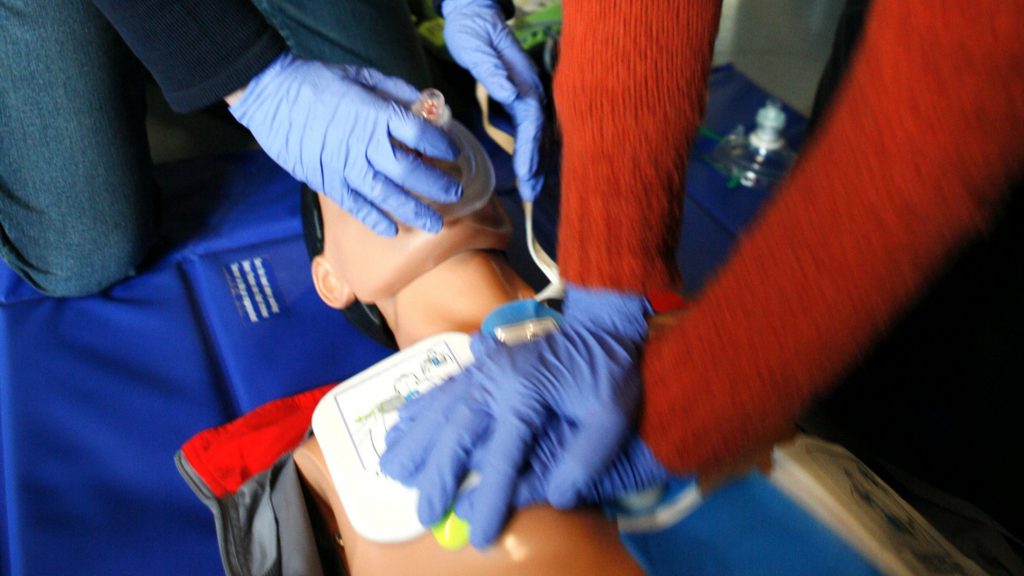During CPR (Cardiopulmonary Resuscitation), it’s essential for rescuers to switch positions if they are performing the procedure for an extended period to ensure the effectiveness of the compressions and to prevent rescuer fatigue. Here are general guidelines for when and how often rescuers should switch positions:
- Time Interval for Switching: Rescuers should aim to switch positions every 2 minutes or after about 5 cycles of 30 compressions and 2 breaths, whichever comes first. This timing aligns with the recommended rate of compressions and allows for minimal interruption in chest compressions.
- Monitoring Rescuer Fatigue: It’s crucial to switch positions before the rescuer performing compressions becomes too fatigued to maintain effective compression depth and rate. Signs of fatigue can include slowing of compressions, decreased depth, or visible signs of physical strain.
- Quick Switch to Minimize Interruption: The switch between rescuers should be as quick and smooth as possible to minimize interruptions in chest compressions. Ideally, the switch should take less than 5 seconds to ensure continuous blood flow to the brain and other vital organs.
- Communication is Key: Before starting CPR, rescuers should agree on the signal or command for switching. Clear communication during the resuscitation effort is crucial to coordinate the switch and other aspects of care efficiently.
- Training and Practice: Regular CPR training and practice, including the switch maneuver, can help rescuers become more efficient and comfortable with the process, reducing the time needed to switch and ensuring the high quality of compressions throughout the resuscitation effort.
These guidelines are based on recommendations from organizations such as the American Heart Association (AHA) and are designed to maximize the effectiveness of CPR while ensuring the safety and endurance of the rescuers. It’s always important to stay updated with the latest CPR guidelines as they can evolve based on new research and consensus in the medical community.
Be sure to practice CPR during in-service training!

